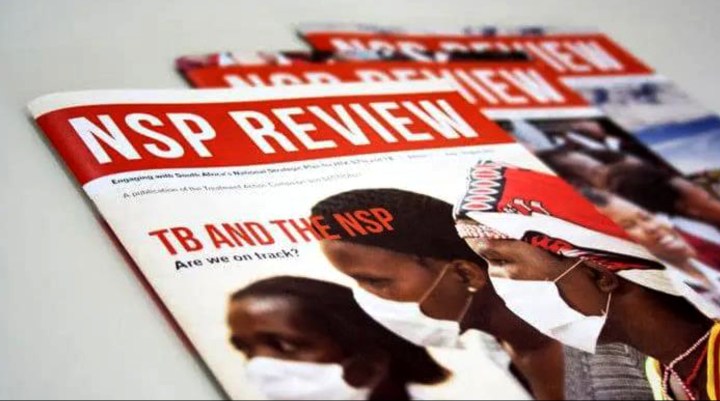SPOTLIGHT EDITORIAL
South Africa needs an HIV and TB plan with significantly greater impact

The nation's new National Strategic Plan for HIV, TB, and STIs is being developed this year. Spotlight editor Marcus Low asks what we should aim for in the new strategy and how we should go about developing it.
There is good reason to be sceptical about the link between healthcare policy and implementation in South Africa. Policies such as those on mental health and palliative care, for example, may be good on paper but have generally gone unimplemented. The Competition Commission’s Health Market Inquiry is arguably one of the most impressive and thorough investigations into a set of healthcare issues in recent years but most of the HMI report’s recommendations are gathering dust.
When it comes to HIV and TB there is also a disconnect but of a different type.
Government is clearly doing a lot of work on HIV and TB — some very good, some less so. On the whole, though, decisions appear to be made in parallel with, rather than guided by the relevant policies.
Part of the reason for this is that the key policy document, the National Strategic Plan (NSP) for HIV, TB, and STIs 2017 – 2022, is tied up with, and widely seen to be a product of, the South African National Aids Council (Sanac).
While Sanac is playing an important role in liaising with large donors such as the Global Fund, it has in recent years been impotent when it comes to influencing key HIV and TB policy decisions. Power appears to be centred in the Minister of Health and National Department of Health with Sanac and the NSP mostly just an afterthought.
Why then should we care about the new NSP?
Both HIV and TB remain public health crises in South Africa. It is clearly better to have a shared strategy for our response to these diseases than not. A better question might thus be how we should go about creating the kind of NSP that would have the greatest impact and what a more impactful NSP might look like.
A good starting point is to recognise that the process of developing the NSP can be valuable in itself — it doesn’t only have to be a means to an end. The process is an opportunity to dig deep into the data, to have an evidence-informed debate about our policy priorities, and ideally to come to a shared understanding of what is needed.
Running such a process will be far from easy and will require strong and intentional leadership. While everyone should be heard, not everyone’s pet project can be included in the NSP. On the other hand, an NSP overly controlled by consultants and ‘insiders’ might leave many feeling they have no skin in the game. And of course, there will be political pressures and several strong personalities to contend with. It really won’t be easy.
While replicating a consultation process at the scale of the HMI is not realistic given time constraints, a case may well be made for a similar process by which people publicly present their inputs (written and/or in-person) to a panel of independent experts who can then interrogate each input. In the case of the HMI, such an ‘inquiry’ style format had the benefit of both hearing a wide variety of inputs and taking those inputs seriously by subjecting them to critical scrutiny.
One risk of a less intentional process is that we end up with an NSP that is little more than a long shopping list of things that would be nice to have, but that we may or may not get. There is some utility in being able to point to the NSP and say this or that intervention is mentioned and therefore we must implement it but on the whole, there is little point in having a strategy if that strategy doesn’t make the tough choices.
What kind of document should we work toward?
At its essence, the NSP should be an inspirational document that gives people a sense of how South Africa can come to grips with HIV, TB, and STIs. It needs to set out the key elements of our shared strategy in terms people outside of the HIV and TB worlds can understand and relate to. It might for example say something like the following:
“We will make it easier for people living with HIV to start taking HIV treatment and to stay on treatment. We will do this by offering everyone the option of home delivery of ARVs by no later than 2025. We will also give everyone enough pills for at least three months at a time. We will also allow and encourage pharmacists to prescribe antiretrovirals.”
Or maybe:
“One reason why so many people die of TB in South Africa is that many people are never diagnosed, or are diagnosed too late. Most of the time healthcare workers only ask about symptoms and do not offer people TB tests. We will change this. From now on, everyone will be able to get at least one TB test per year if they want it.”
Ideally, the core of the NSP should be a document of one or two pages pitched at the level of the above paragraphs. It should be the kind of thing that can be printed on a poster and read and understood by anyone in two or three minutes.
Of course, we will also need supporting documents that rigorously set out the relevant scientific evidence, convincing reasoning behind the various elements of the strategy, realistic plans on how the interventions can be implemented in our resource-constrained setting (something that arguably was missing from the previous plan), and details on how progress will be measured. But essential as these supporting documents are, they are not the things that will make the plan resonate outside of HIV and TB circles.
Around 13% of South Africa’s population are living with HIV. Over 300,000 people are estimated to fall ill with TB every year, with many more getting infected, but not falling ill. One way to make the new NSP matter more than the previous one, would be to write it with these people in mind, not just as passive recipients of government services, but as people who have a personal stake in the plans — and who might actually want to read and understand the NSP. DM/MC
Marcus Low is the editor of Spotlight.
*This article was published by Spotlight – health journalism in the public interest.





















 Become an Insider
Become an Insider
Comments - Please login in order to comment.